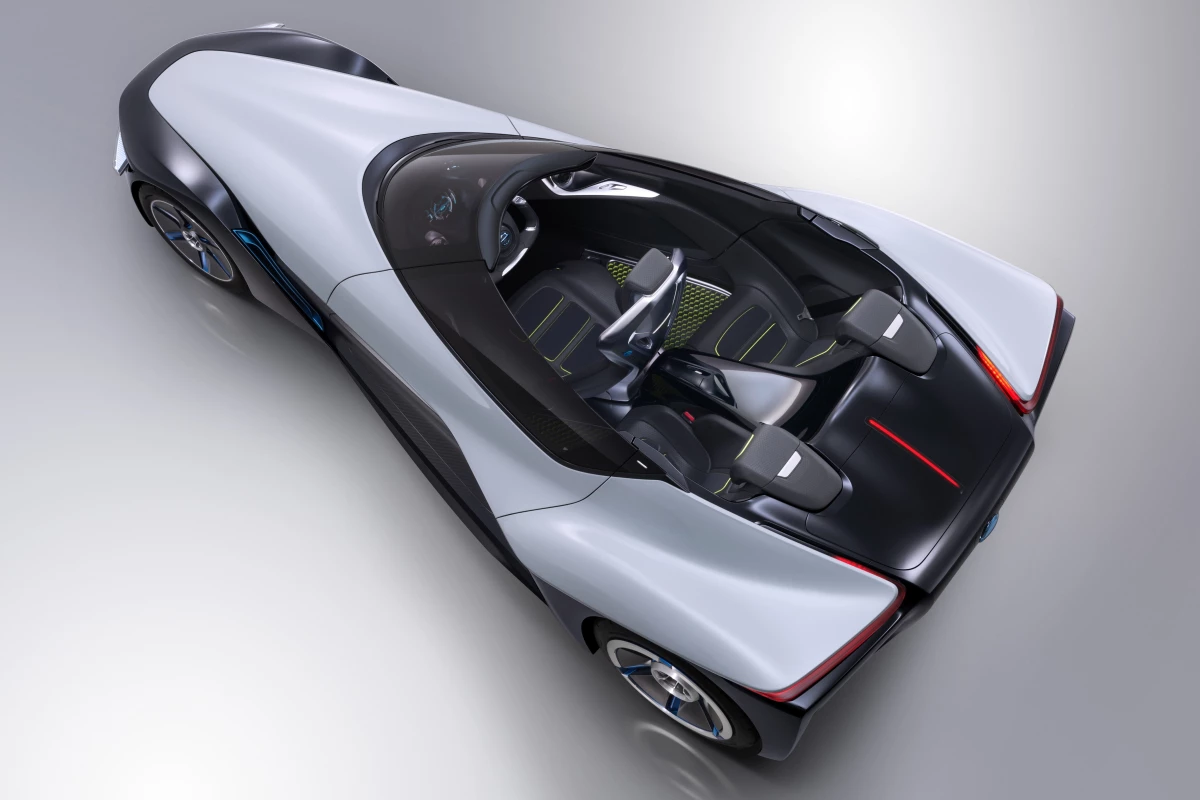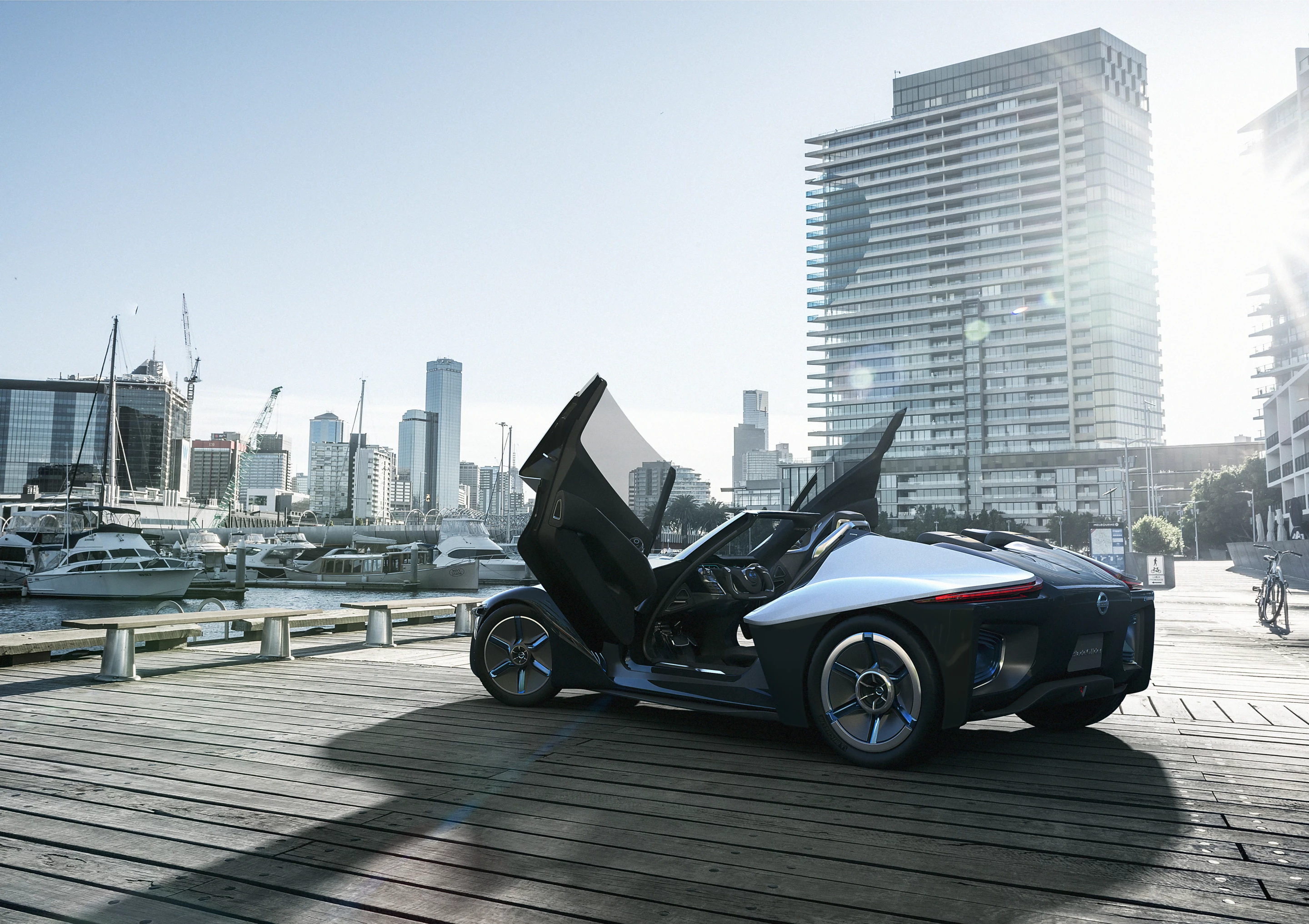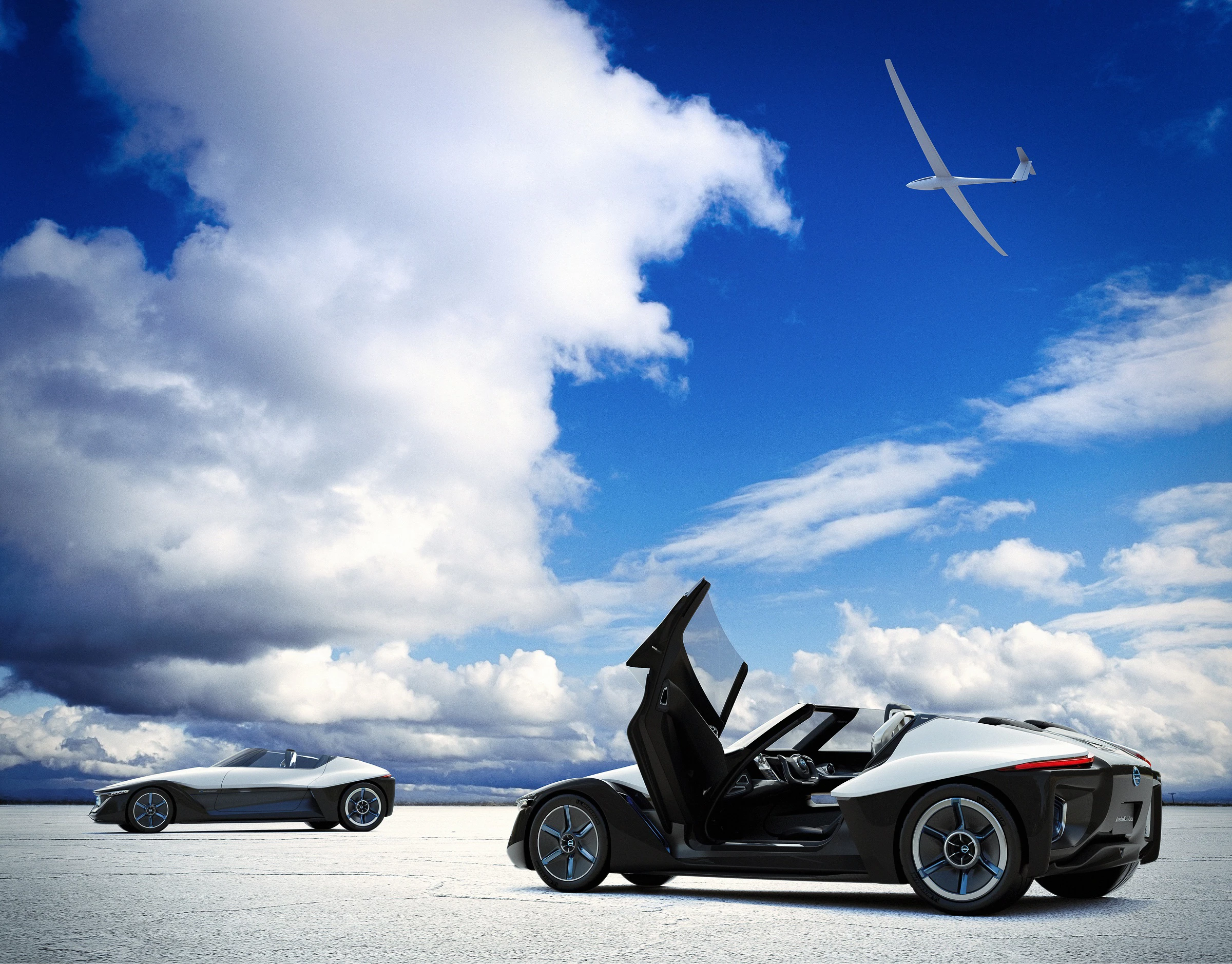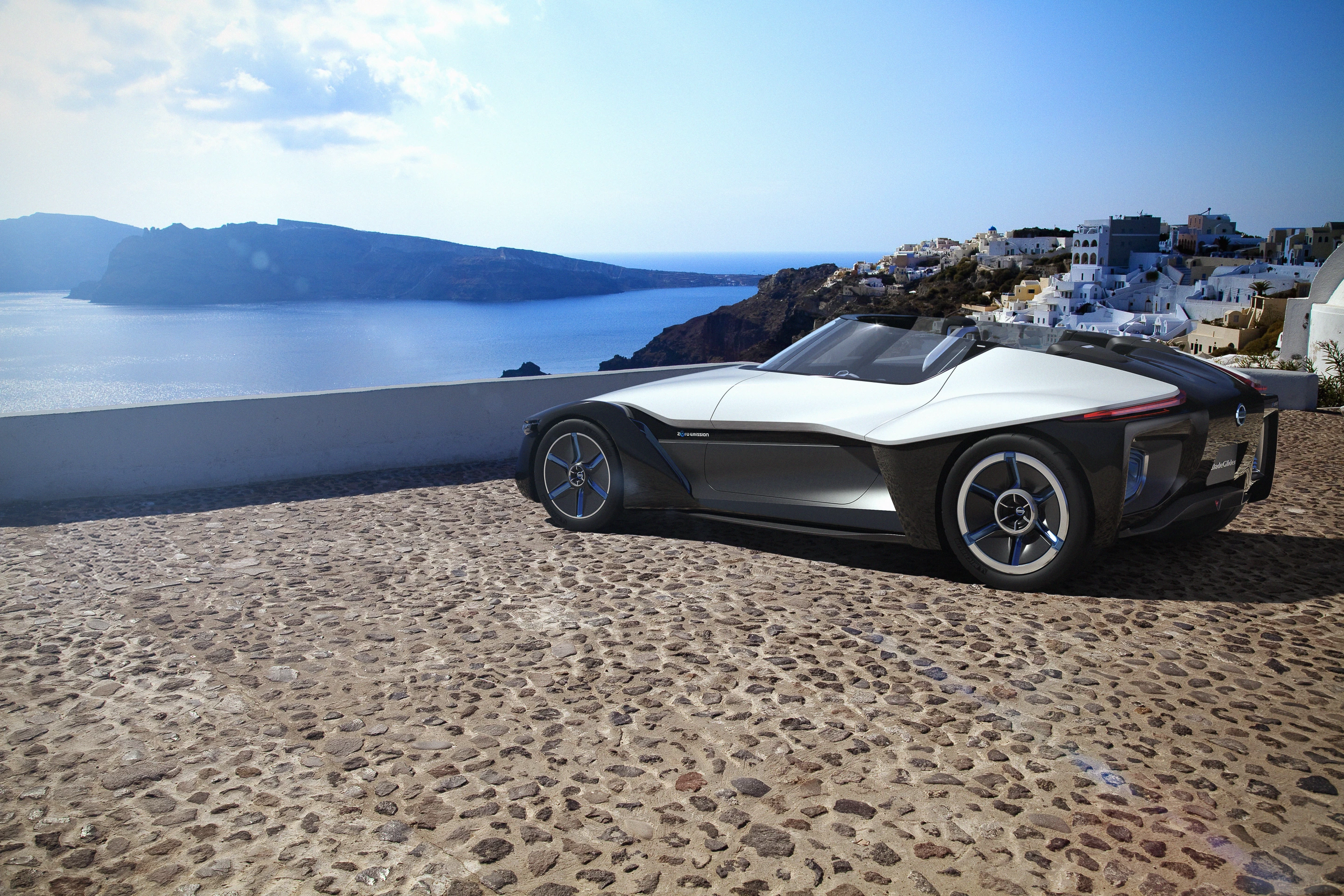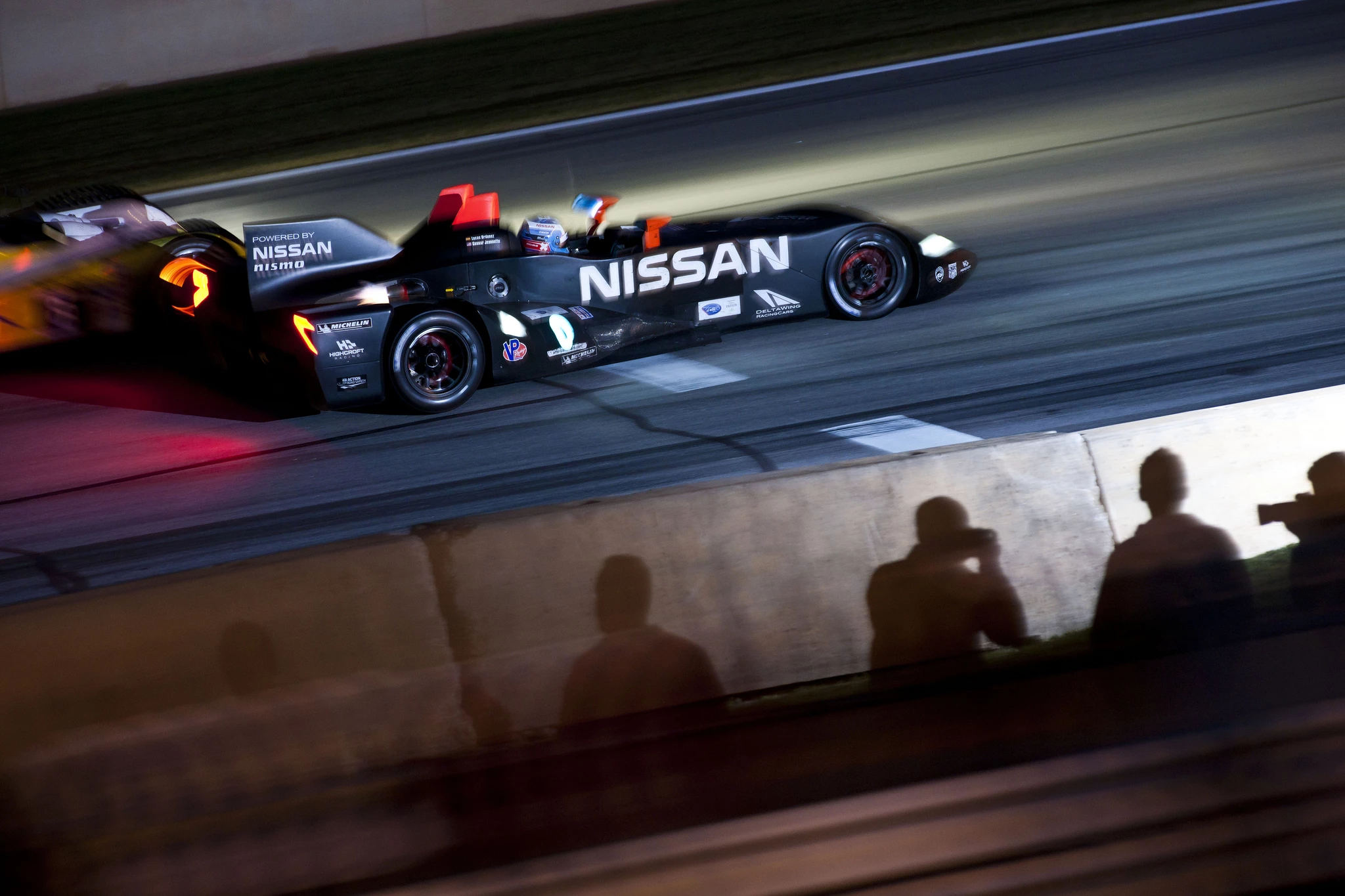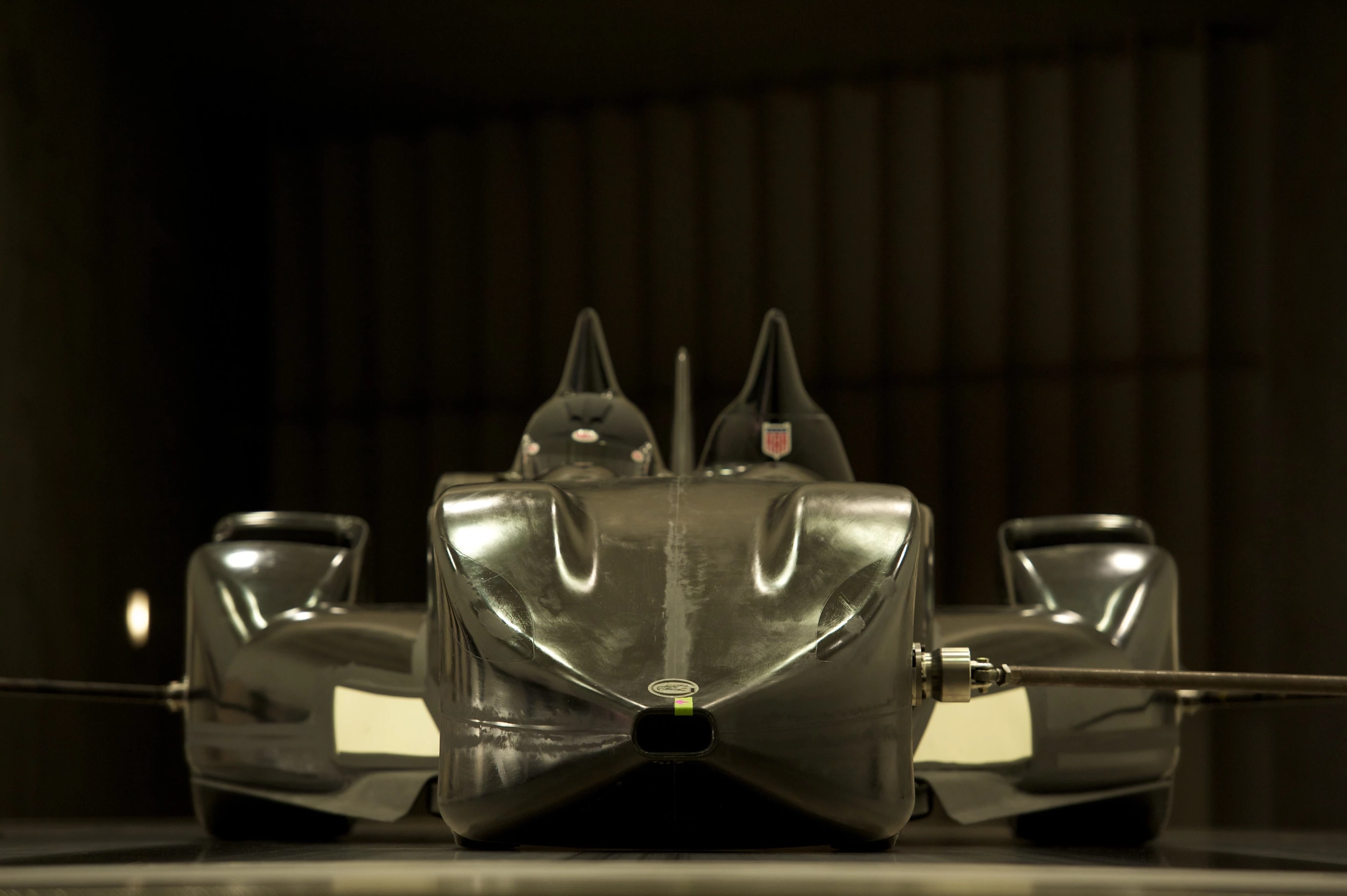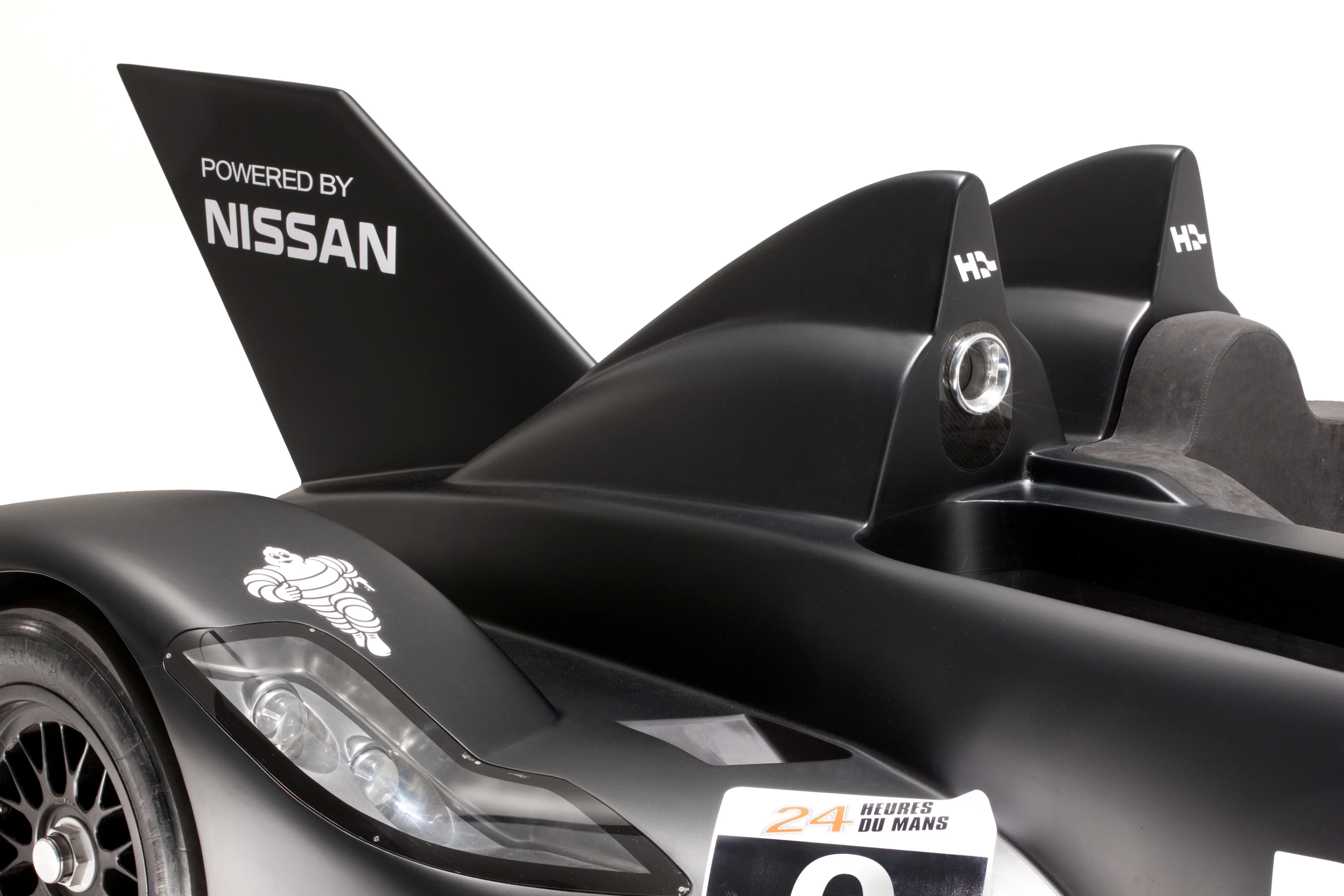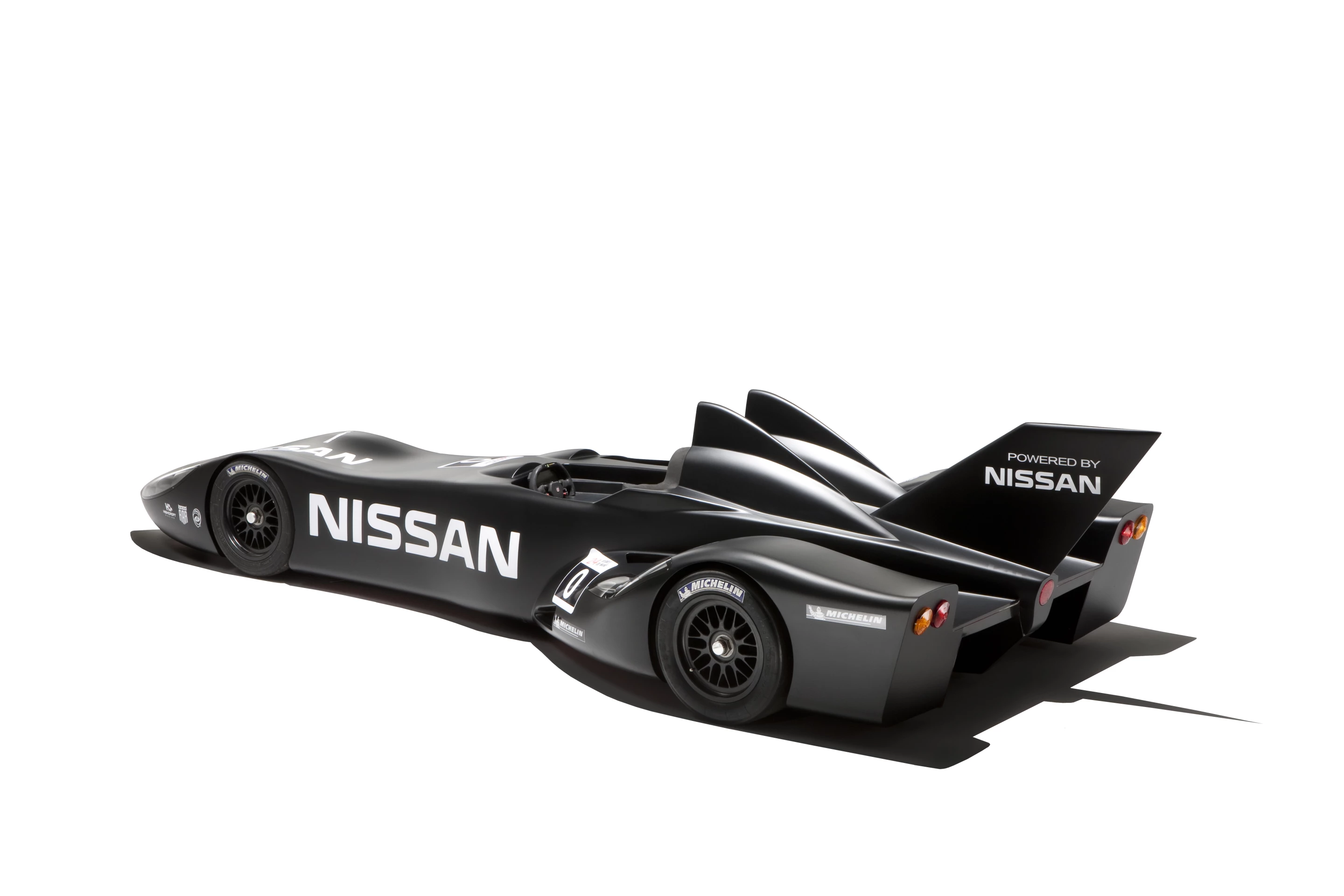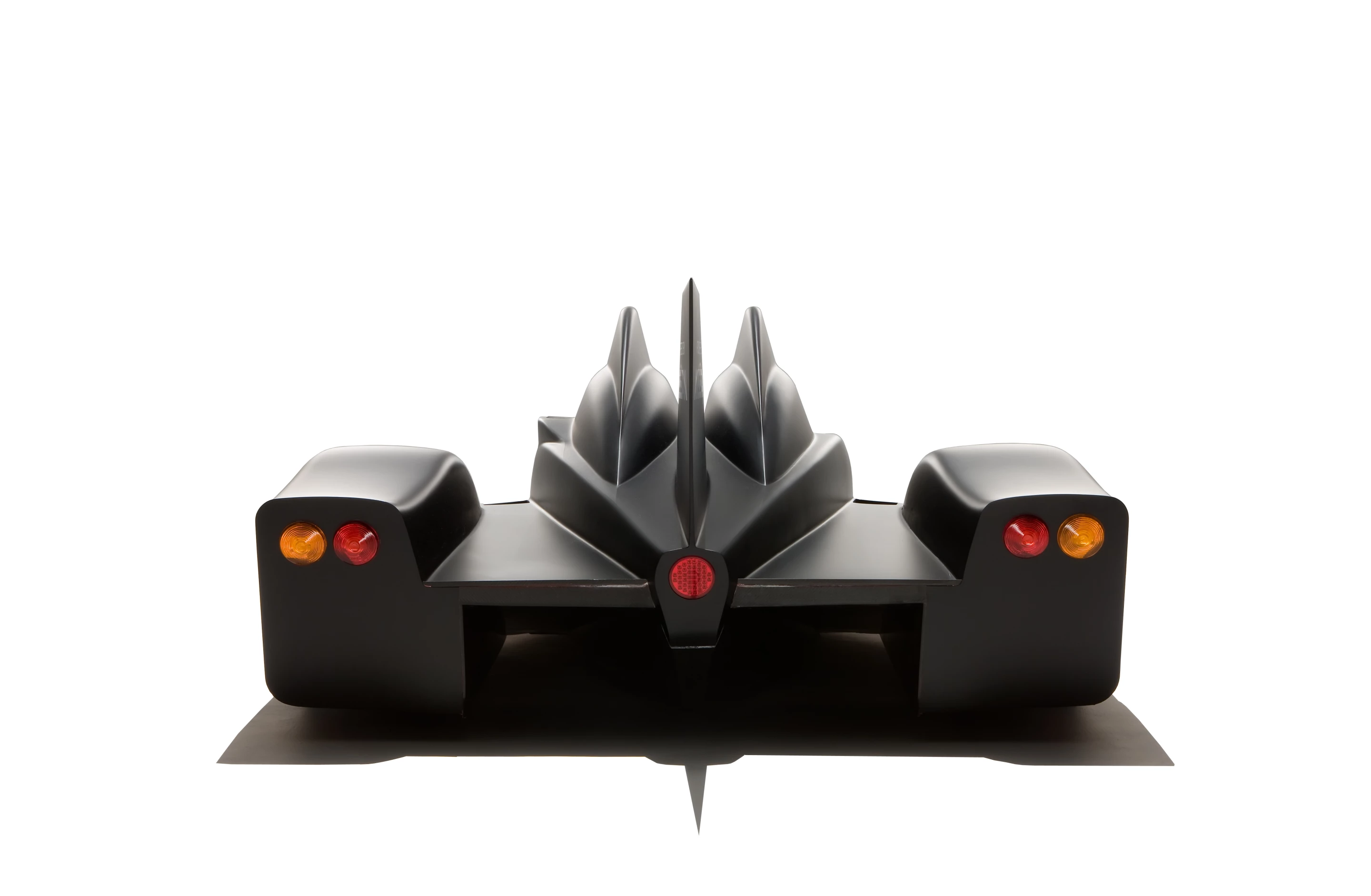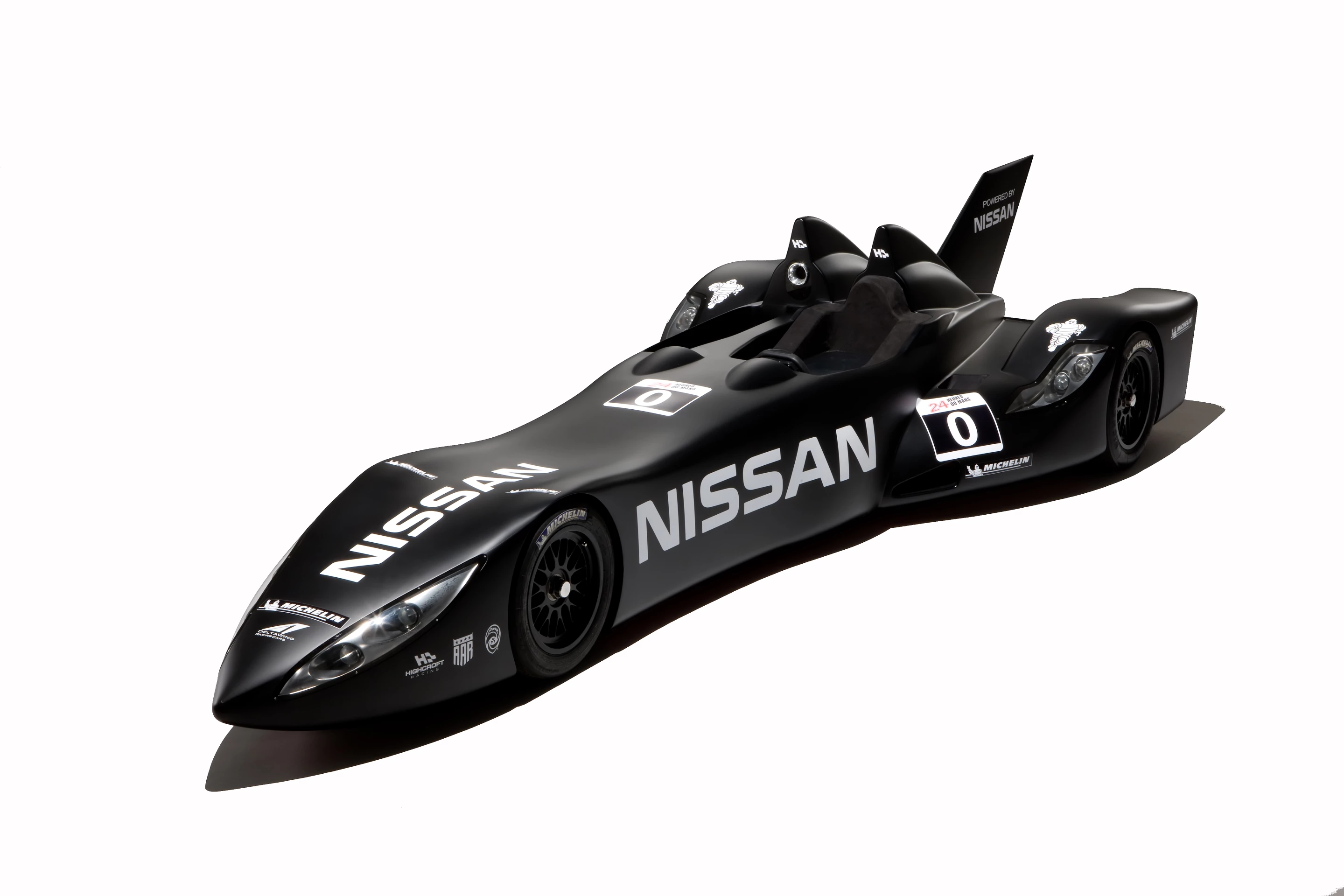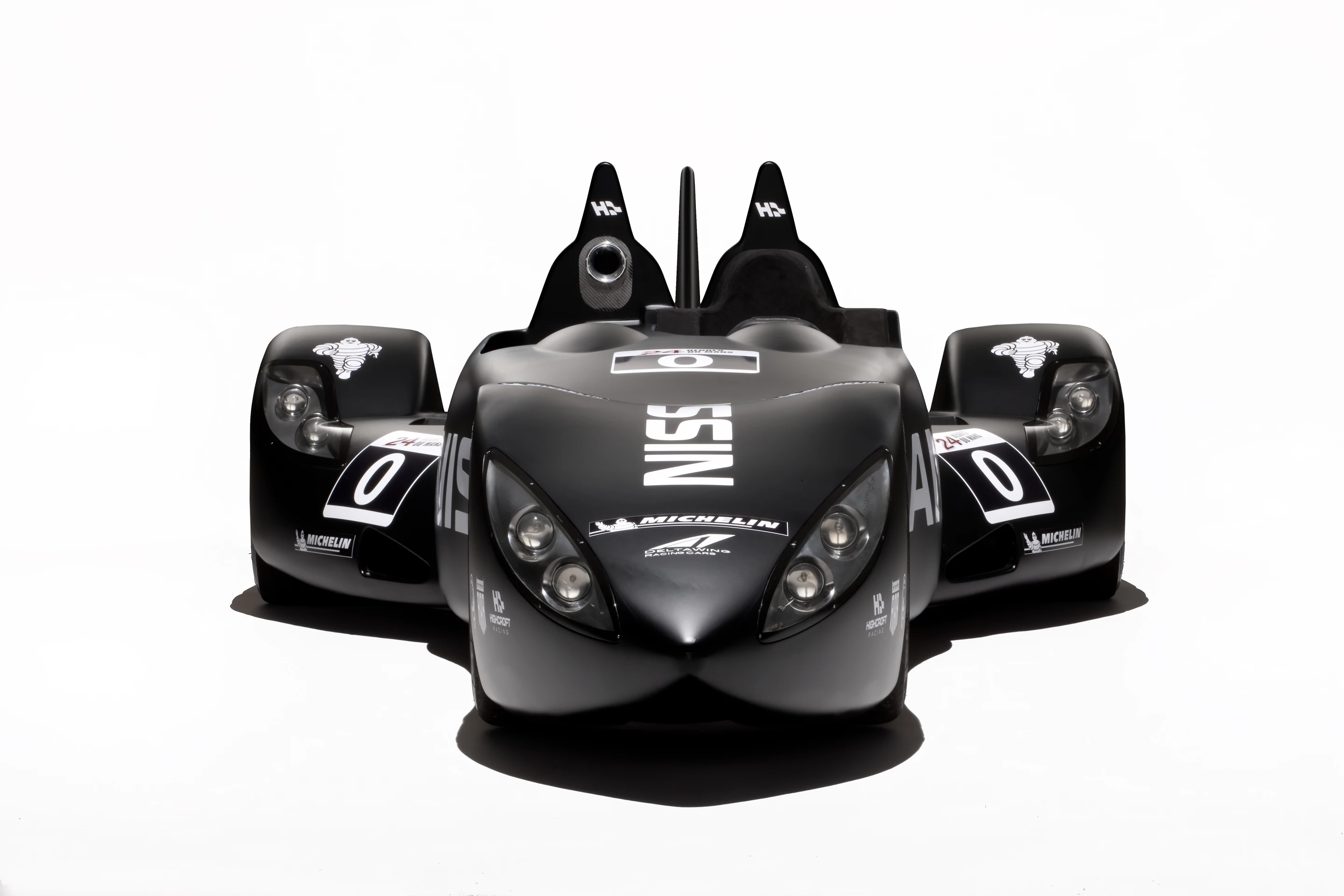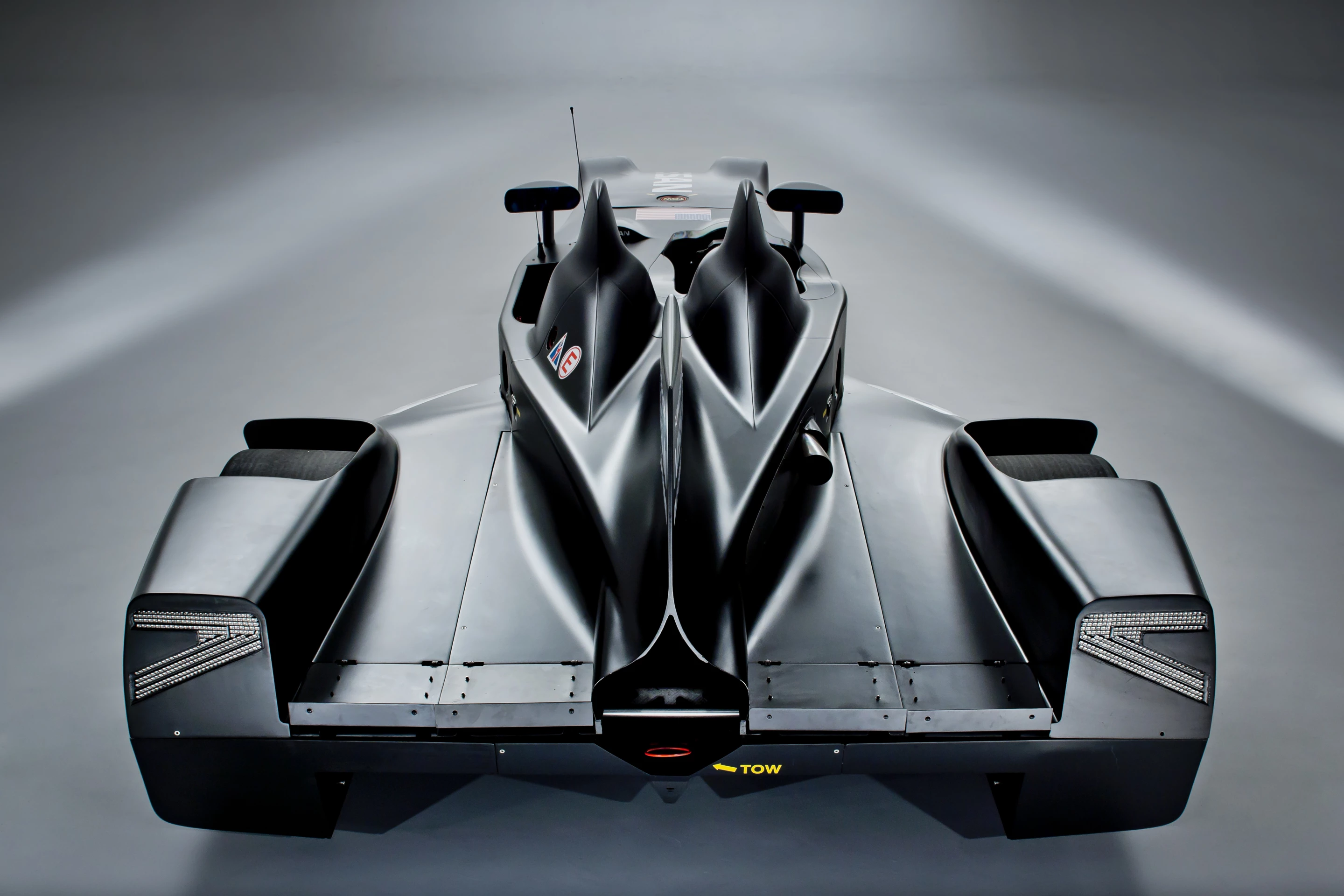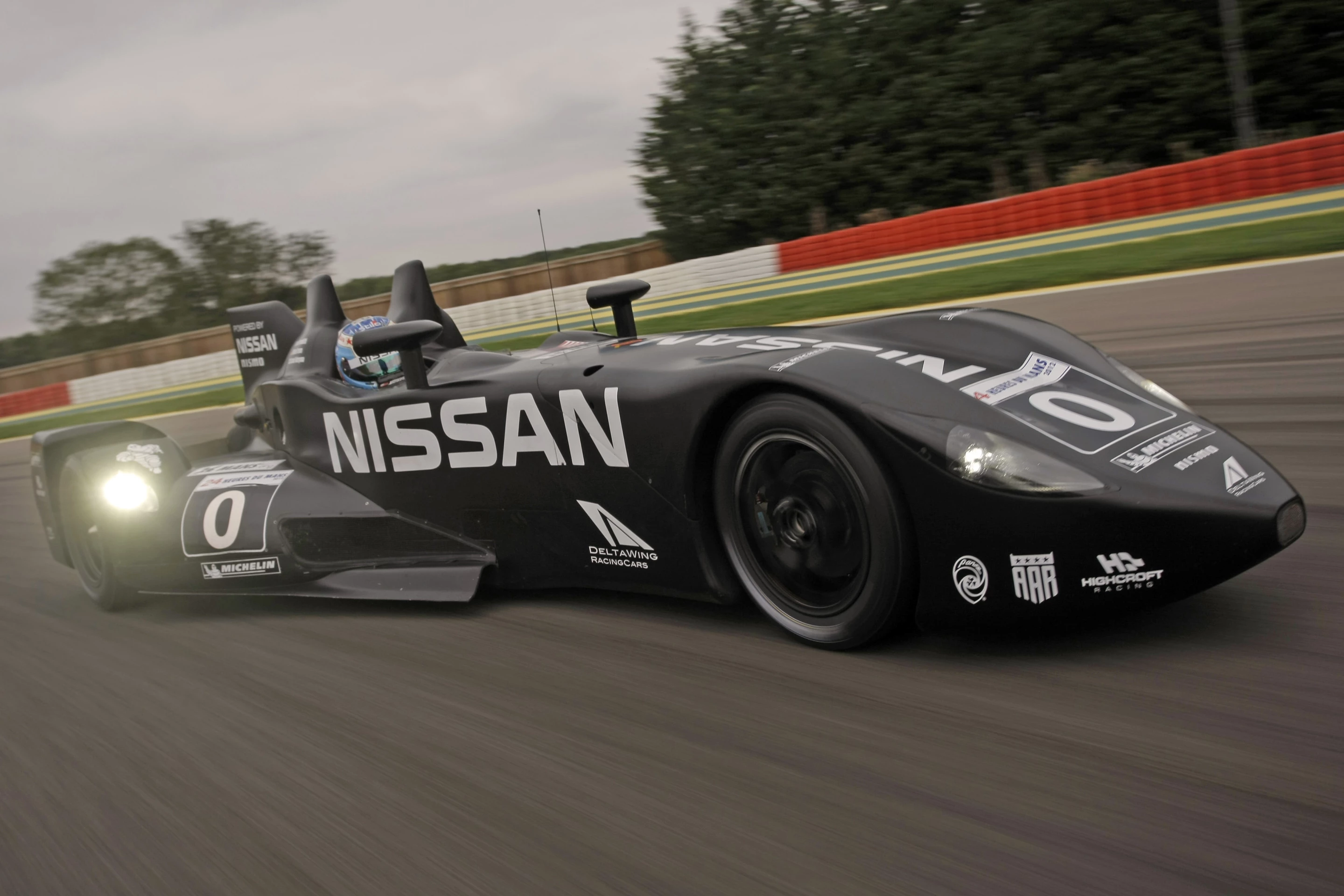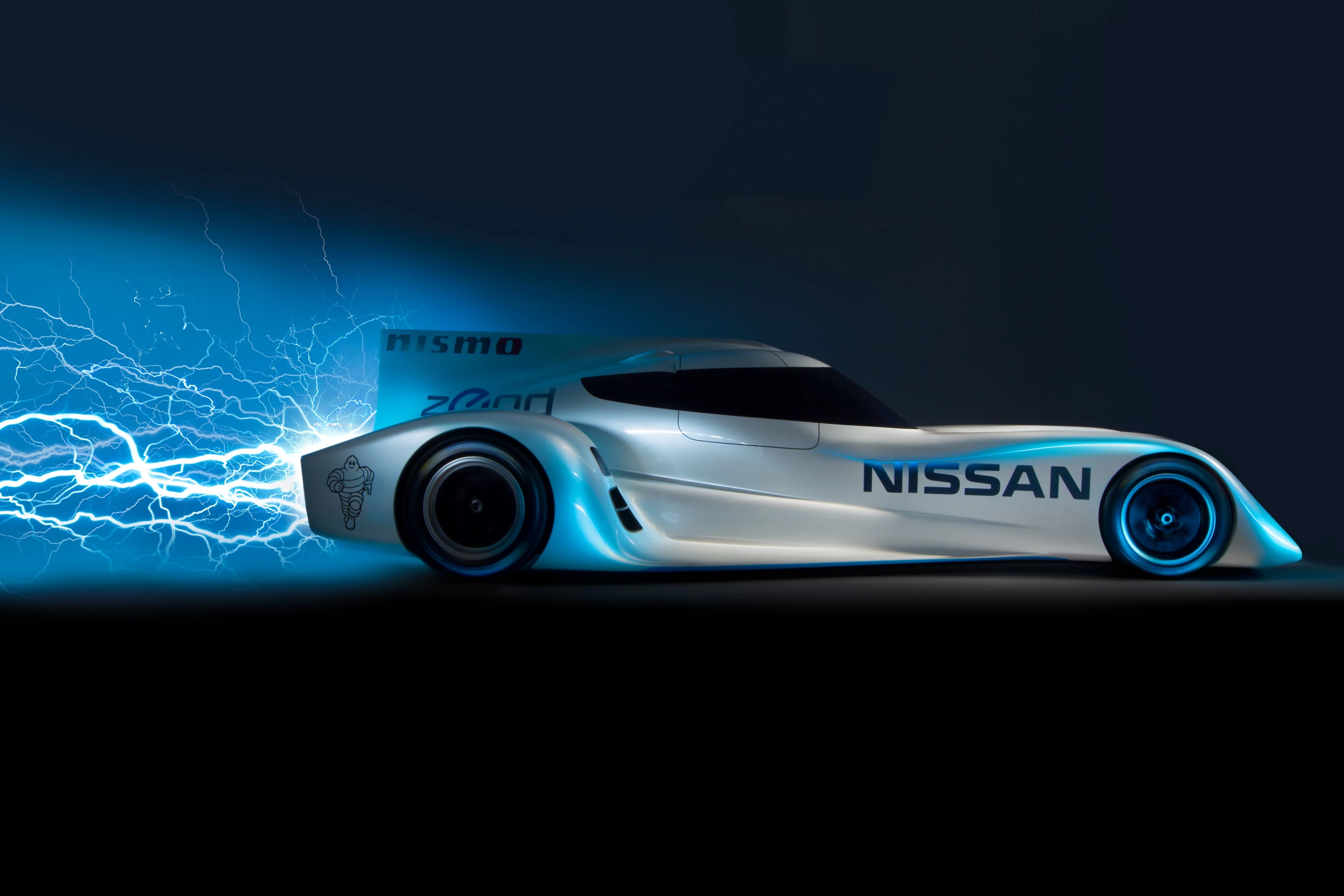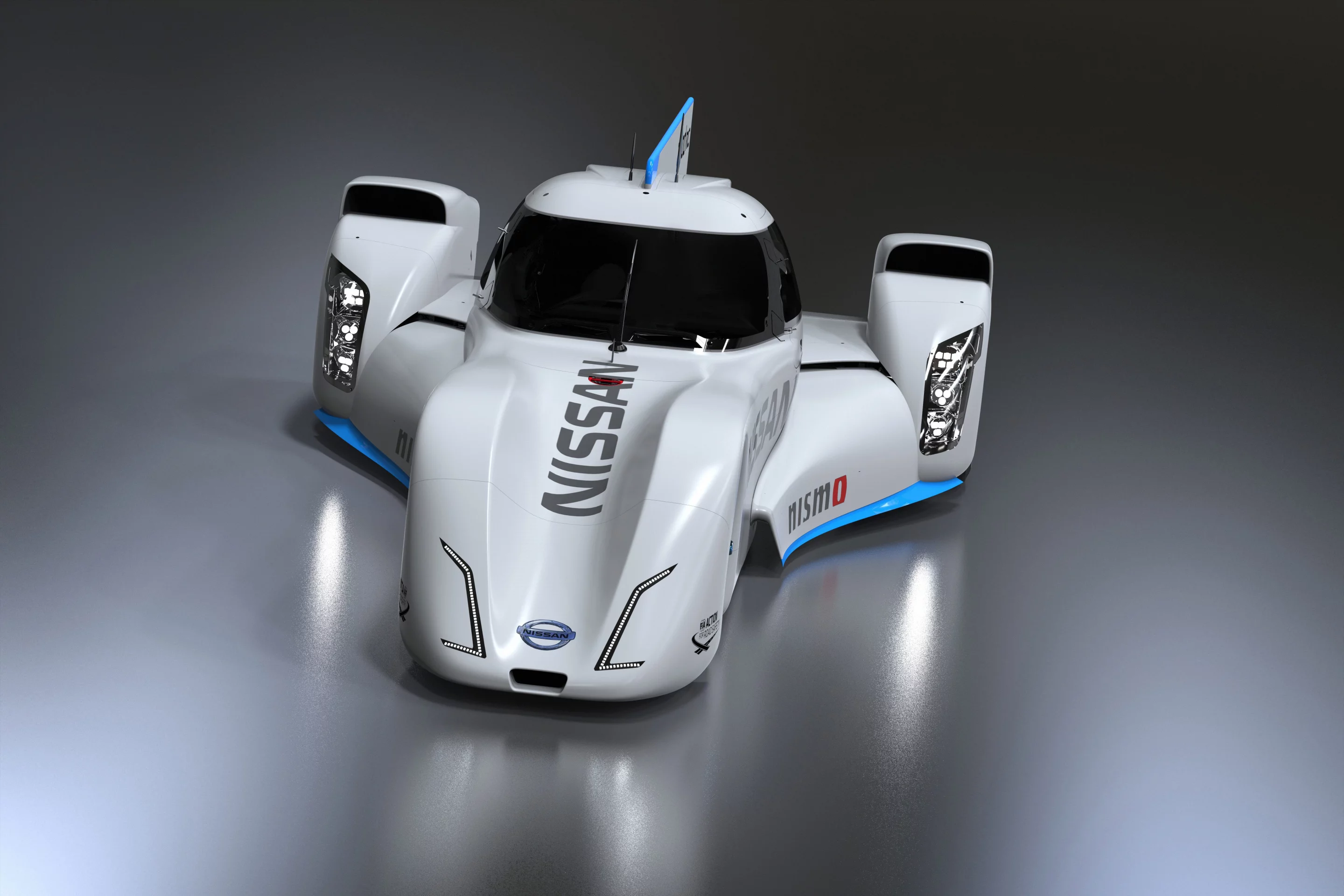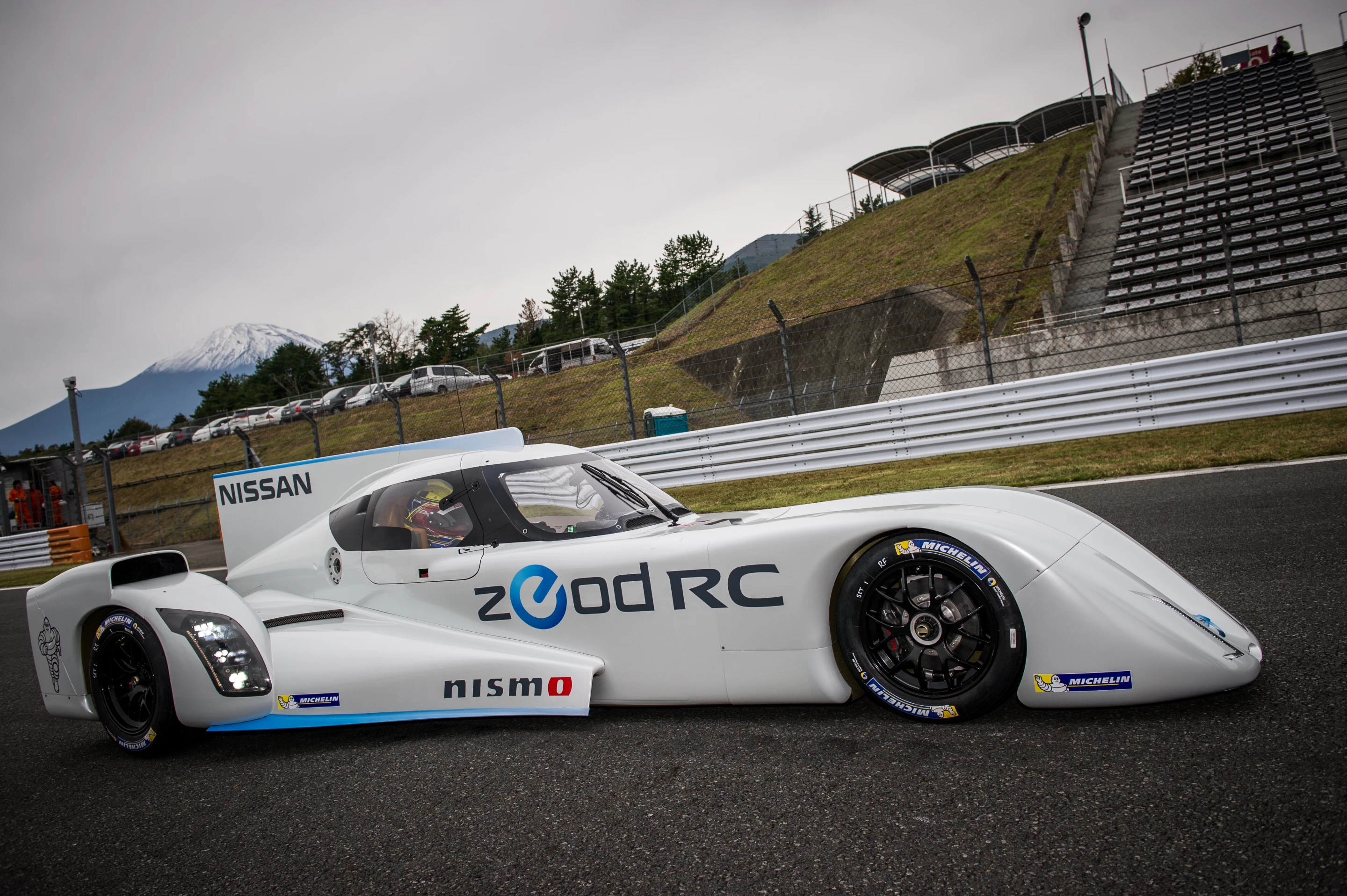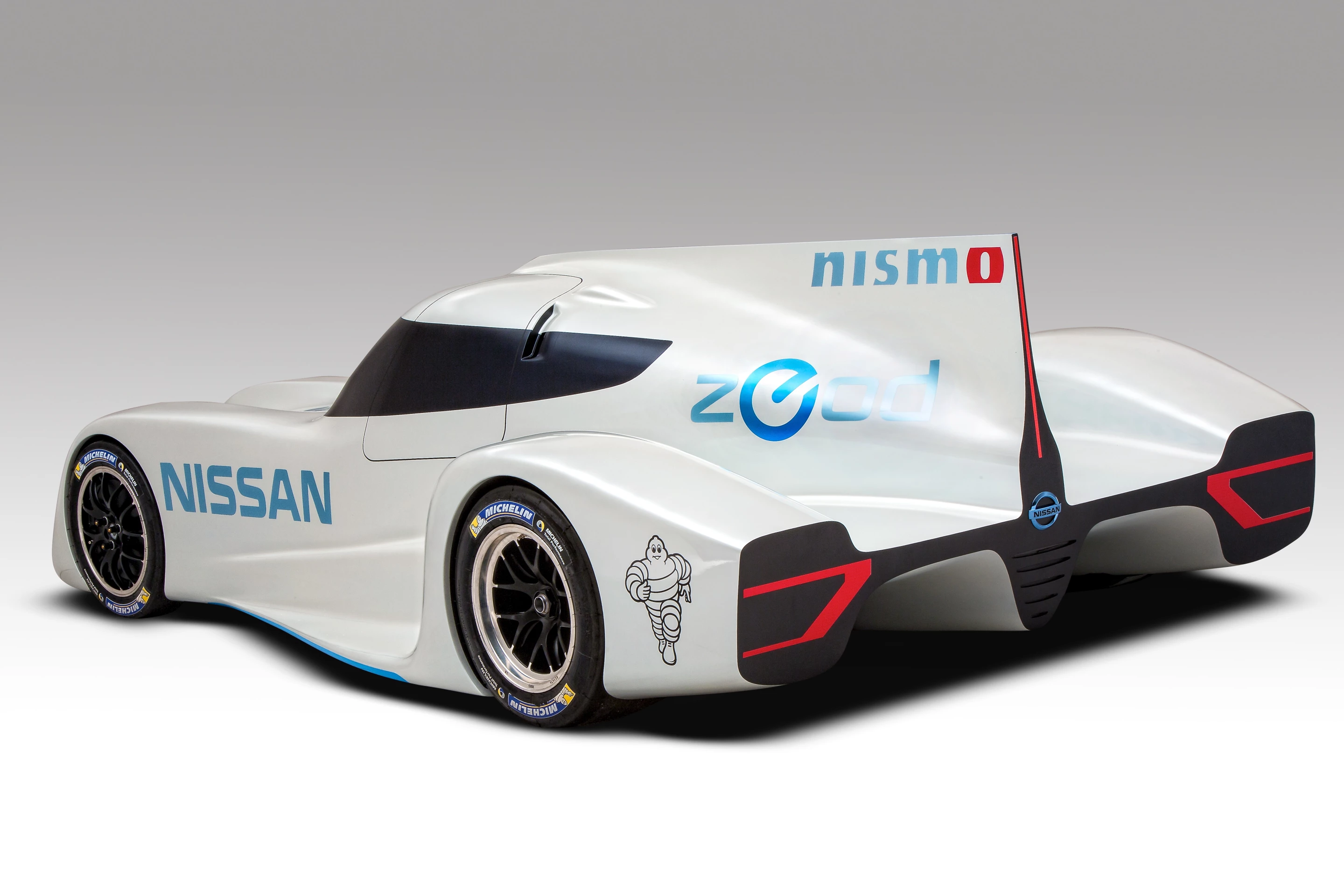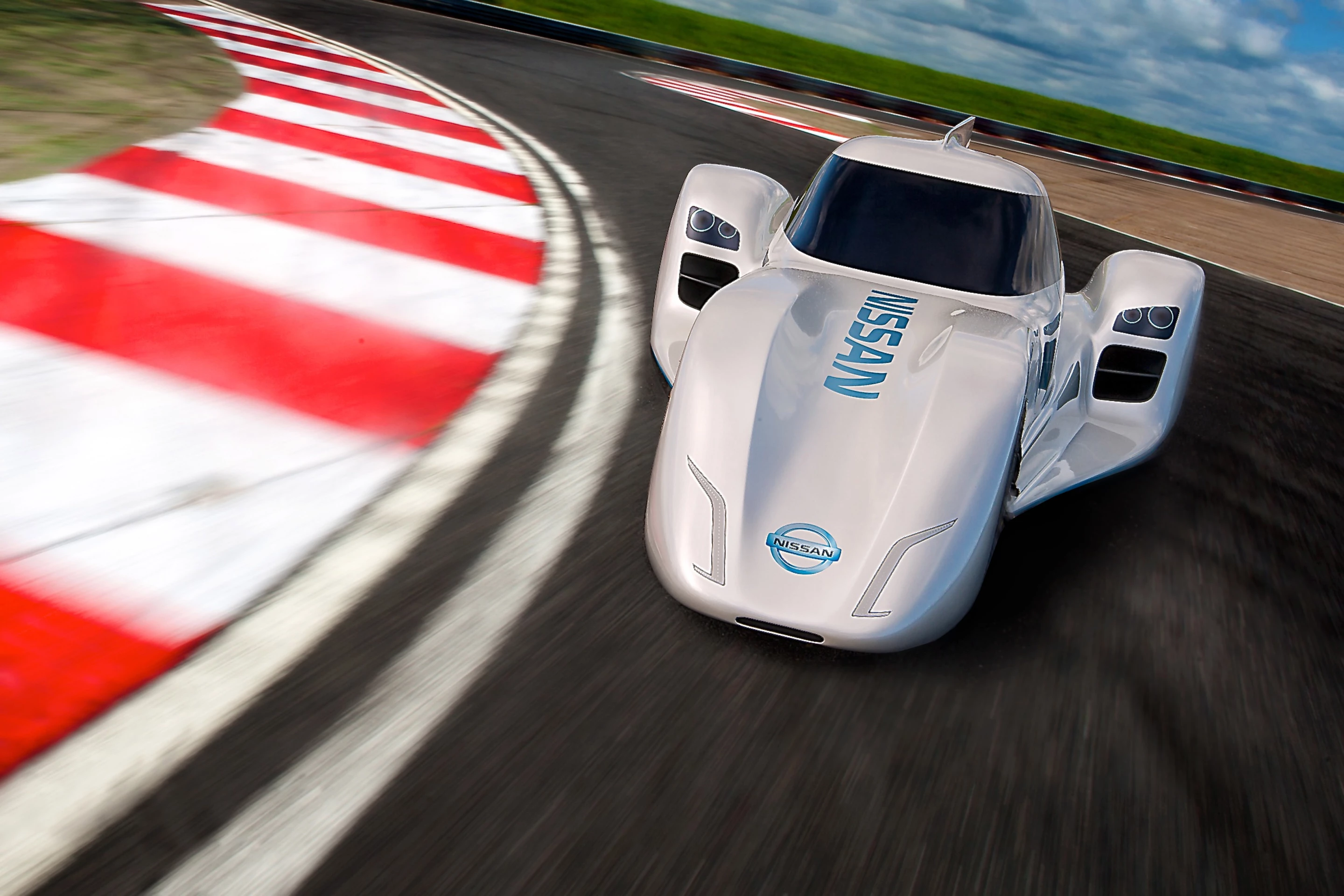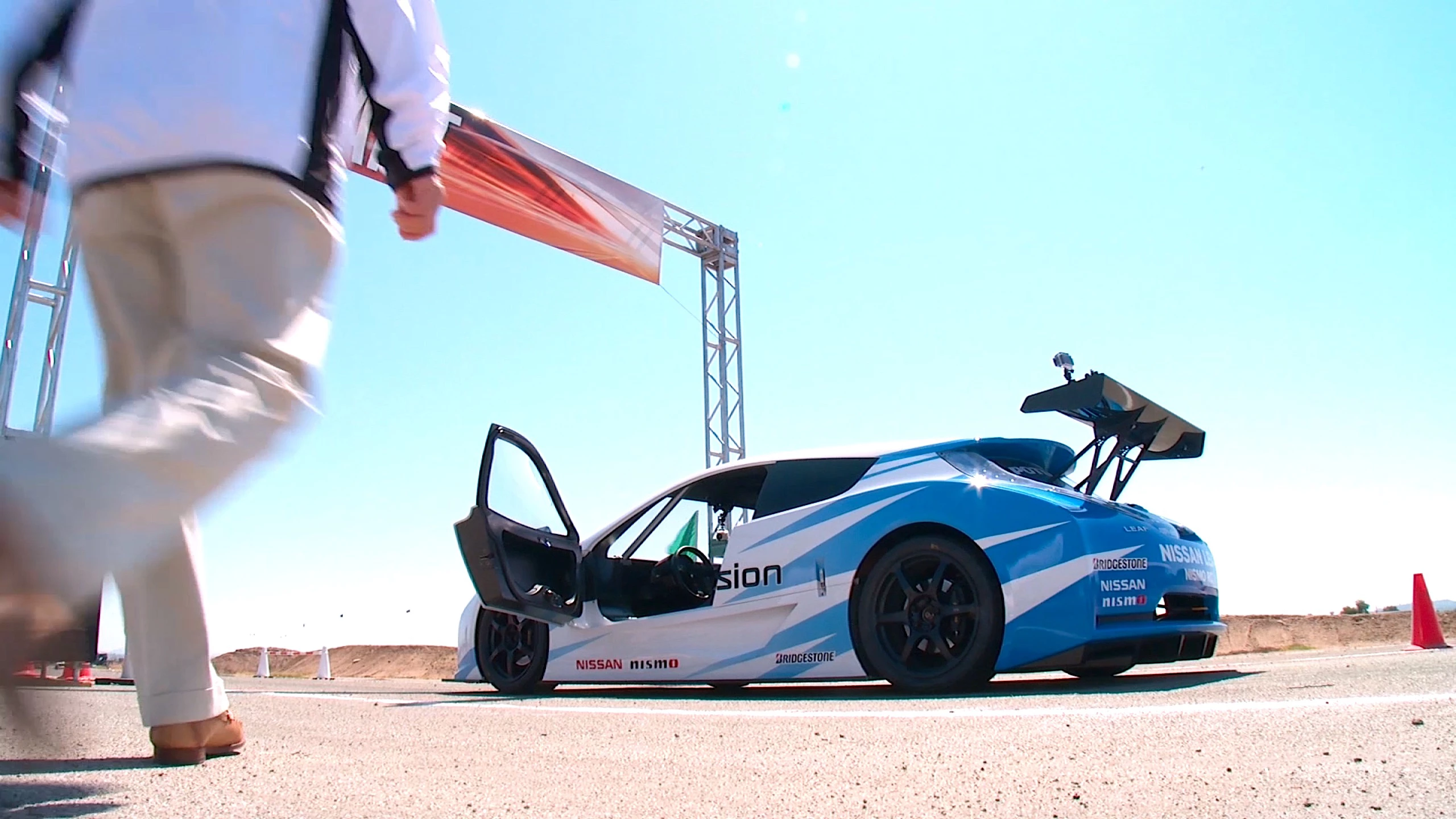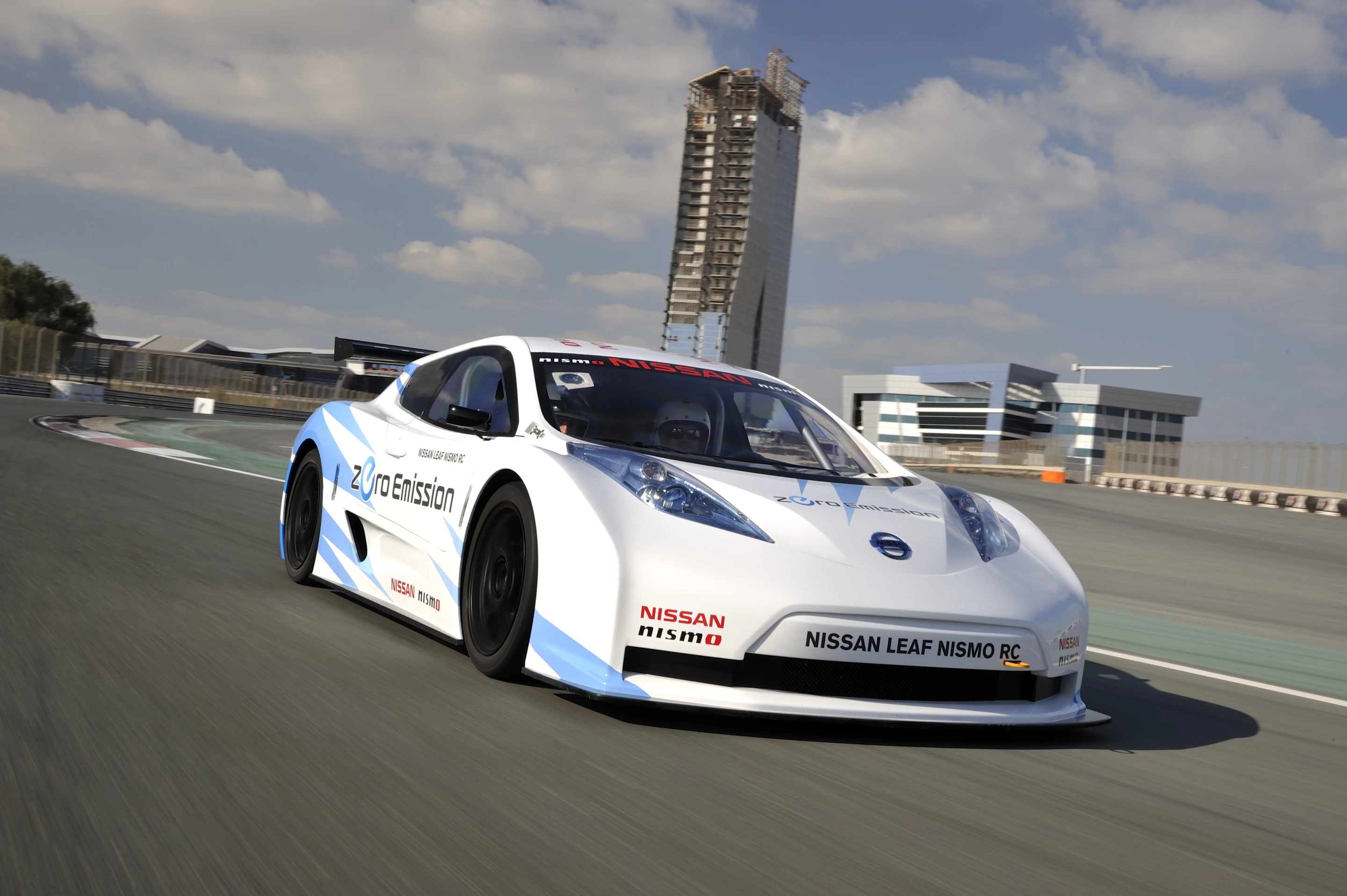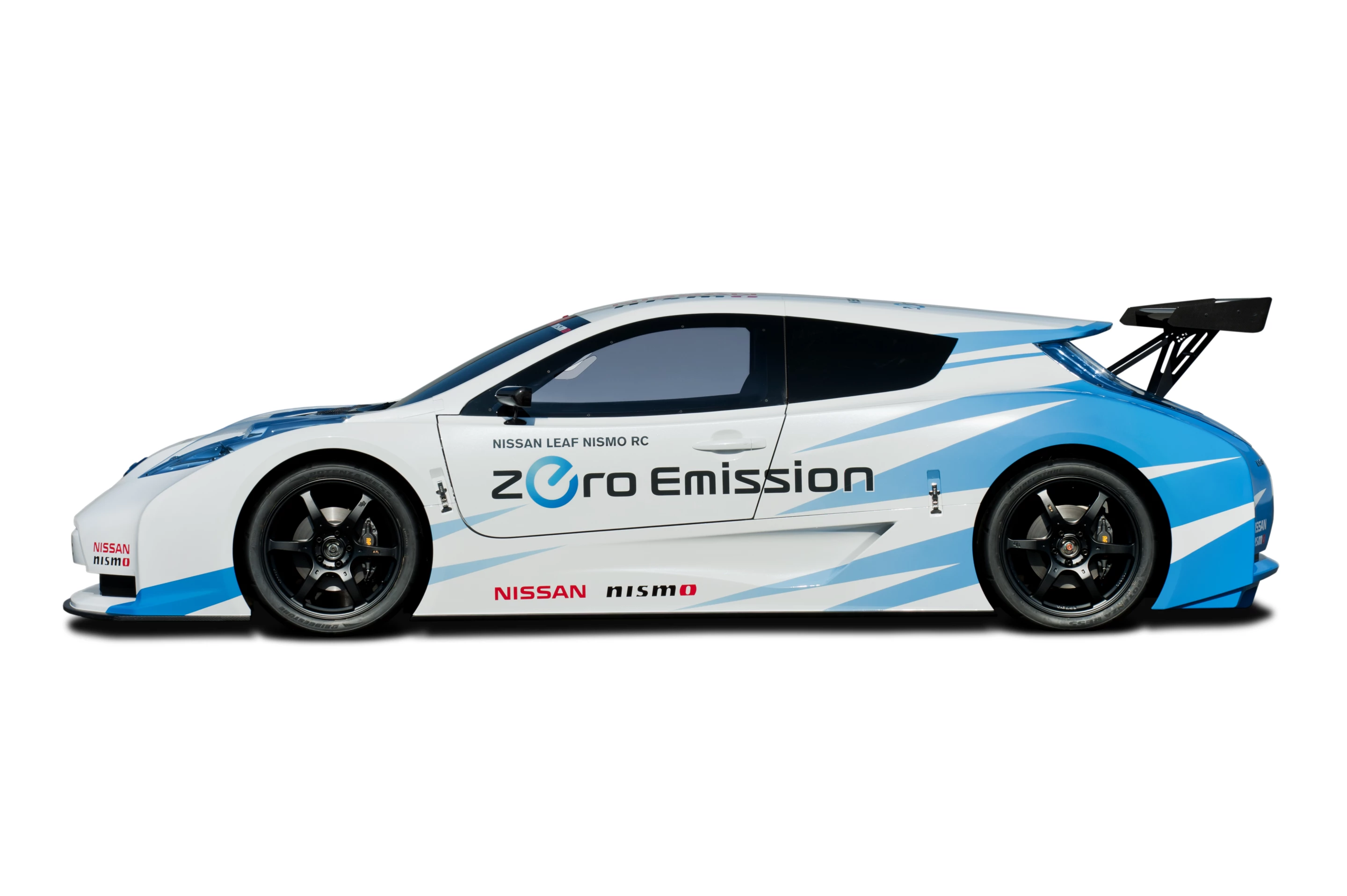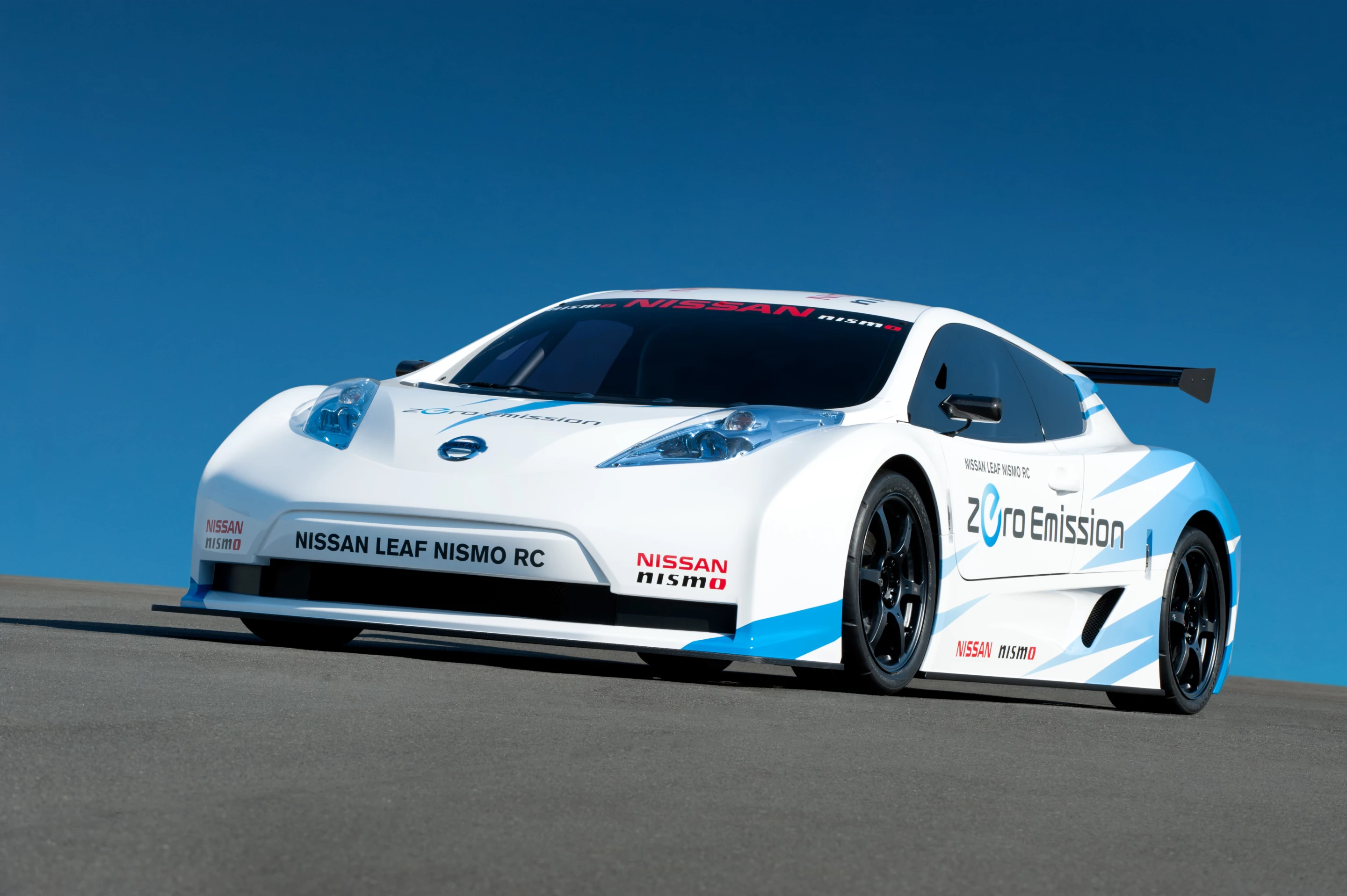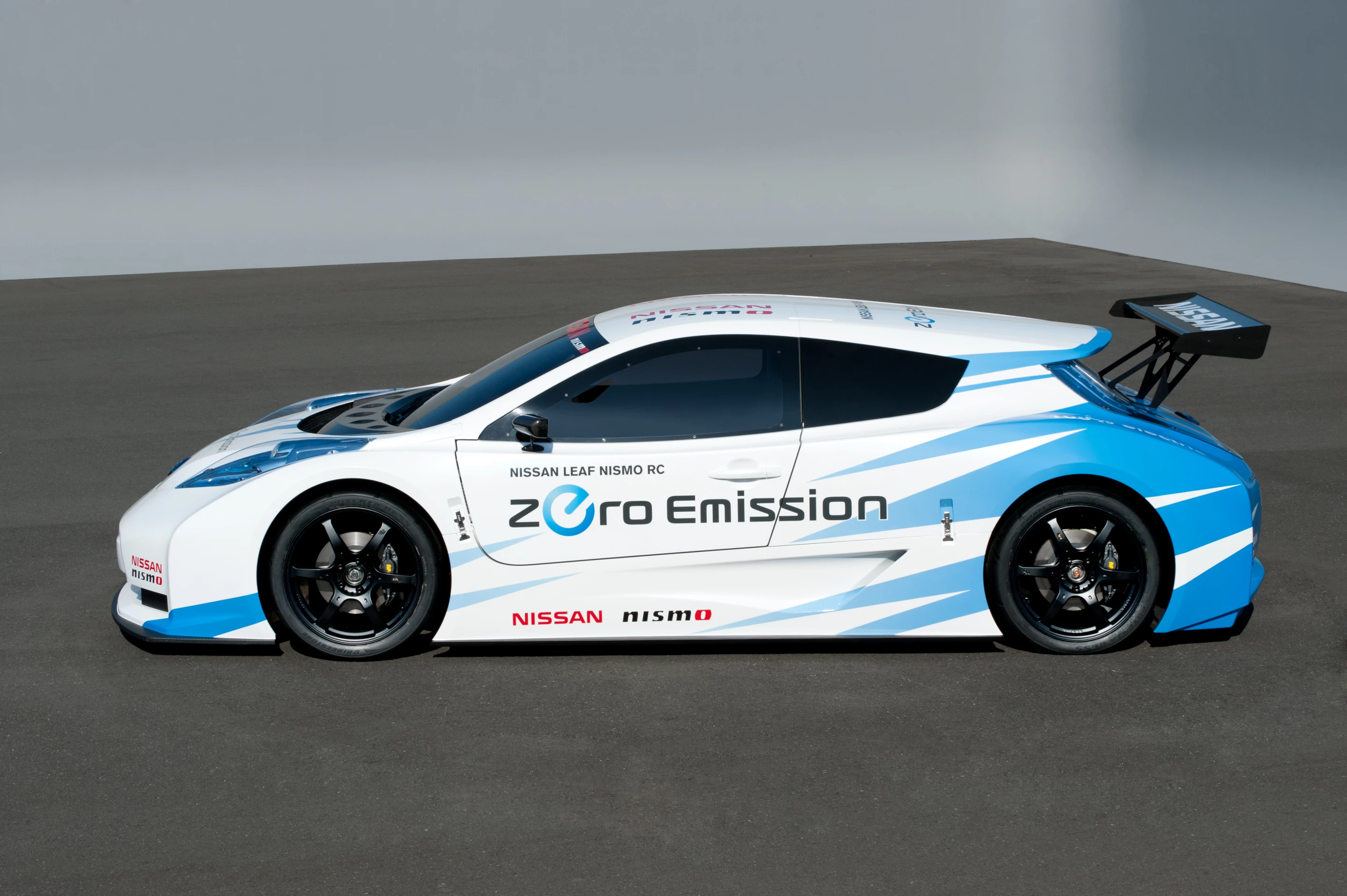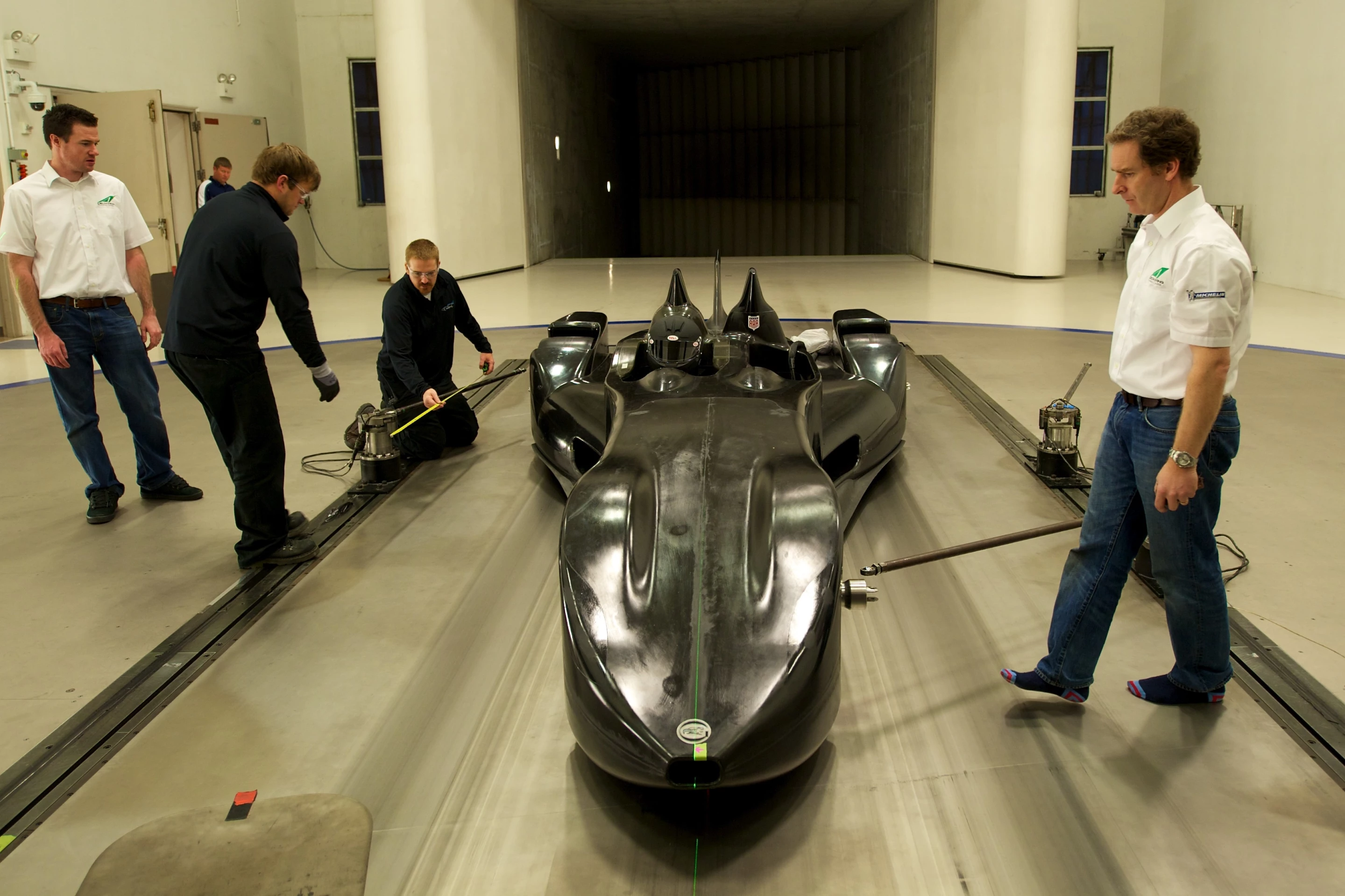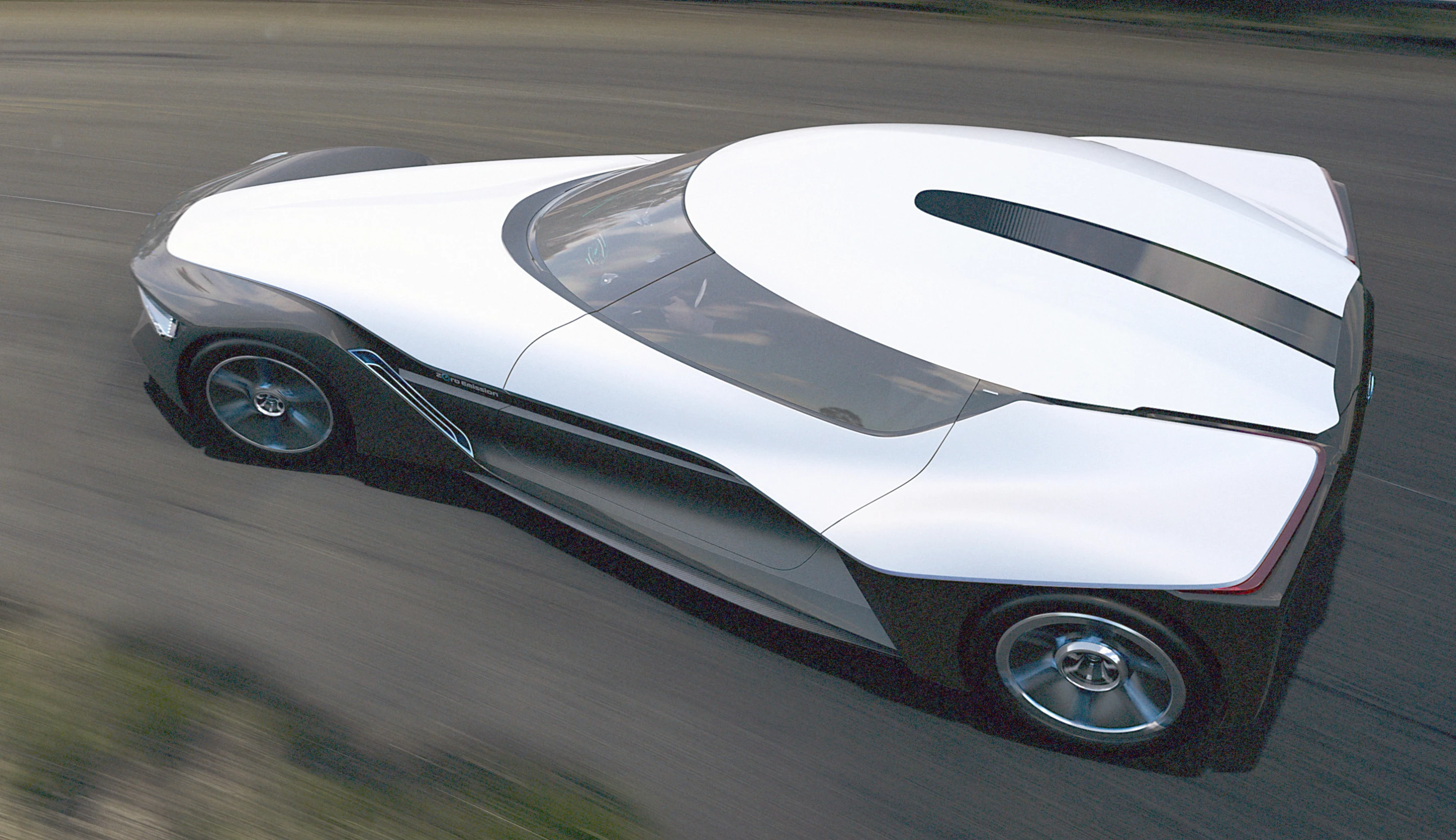The BladeGlider concept to be shown by Nissan at the Tokyo Motor Show this month will no doubt cause a stir among the general populace for its radical shape, but it just might represent a significant moment in the history of the automobile. When Ben Bowlby conceived the vehicle’s revolutionary architecture in December 2008, he envisioned a far more efficient automobile than current form factors allow.
Just five years later, the same trapezoid form factor will be the marquee unveiling at one of the most important car shows in the world. The reason it is so important, and yes, revolutionary, is that the Bladeglider (nee ZEOD RC, nee Deltawing) has such a low aerodynamic drag coefficient, that it uses considerably less energy to achieve the same performance as a conventional car using the same powerplant – maybe as little as half the energy.
It is hence a perfect choice for an electric vehicle, where energy storage is limited, range anxiety is high, and performance EVs still need all the help they can get in balancing performance with the practical considerations of the public roads.
When the Deltawing made its debut in the Le Mans 24 Hour race, it lasted just six hours before it was involved in an accident caused by another car. It qualified a highly respectable 29th but its race pace was at the bottom end of the LMP2 class and most of the remarkable things it achieved that weekend were overlooked because it did not feature in the results.
During the six hours it ran at Le Mans, it was using half the fuel of its competitors and running twice the distance on a set of tires. Indeed, the front tires were doing much better than the rears, but in time-honored tradition they got changed when the rears did, so we won’t know how much less wear they were experiencing until next June when hostilities resume once more.
As Road & Track magazine pointed out in its summary of the car’s efforts: “50 percent is the most prevalent figure and frame of mind with the Dan Gurney-built prototype. Bowlby's four-wheeled declaration was brought to life to prove that similar performance to that of the class-leading prototypes can be achieved with half the weight, half the power, and half the fuel and tire consumption.”
That’s the point of the Bladeglider. It is more efficient by design, and not trying to make the traditional shape of the automobile more efficient. It represents new thought, and Nissan should be congratulated for its boldness in embracing the concept of rearranging the four wheels of the “square car.”
Unlike nearly all concept cars, which are designed to assess public opinion, the uber-radical Bladeglider already seems destined for production. Normally, radical concepts get tentatively proposed as highly futuristic, in case the post-event market research bombs.

Hence, the Nissan press release carries some statements as bold as the concept itself: "More than a concept, Nissan BladeGlider is both a proposal for the future direction of Nissan electric vehicle (EV) development and an exploratory prototype of an upcoming production vehicle from the world’s leading EV manufacturer."
A new brand emerges
Just as Nismo is being developed as an automotive brand in its own right by Nissan, ZEOD will also come to be a stand-alone brand too. An acronym for “Zero Emissions On Demand,” ZEOD will wear a host of brand values such as innovative design, sustainable energy and environmentally-responsible and will be the banner name for Nissan’s electric and hybrid production cars from 2015 onwards.
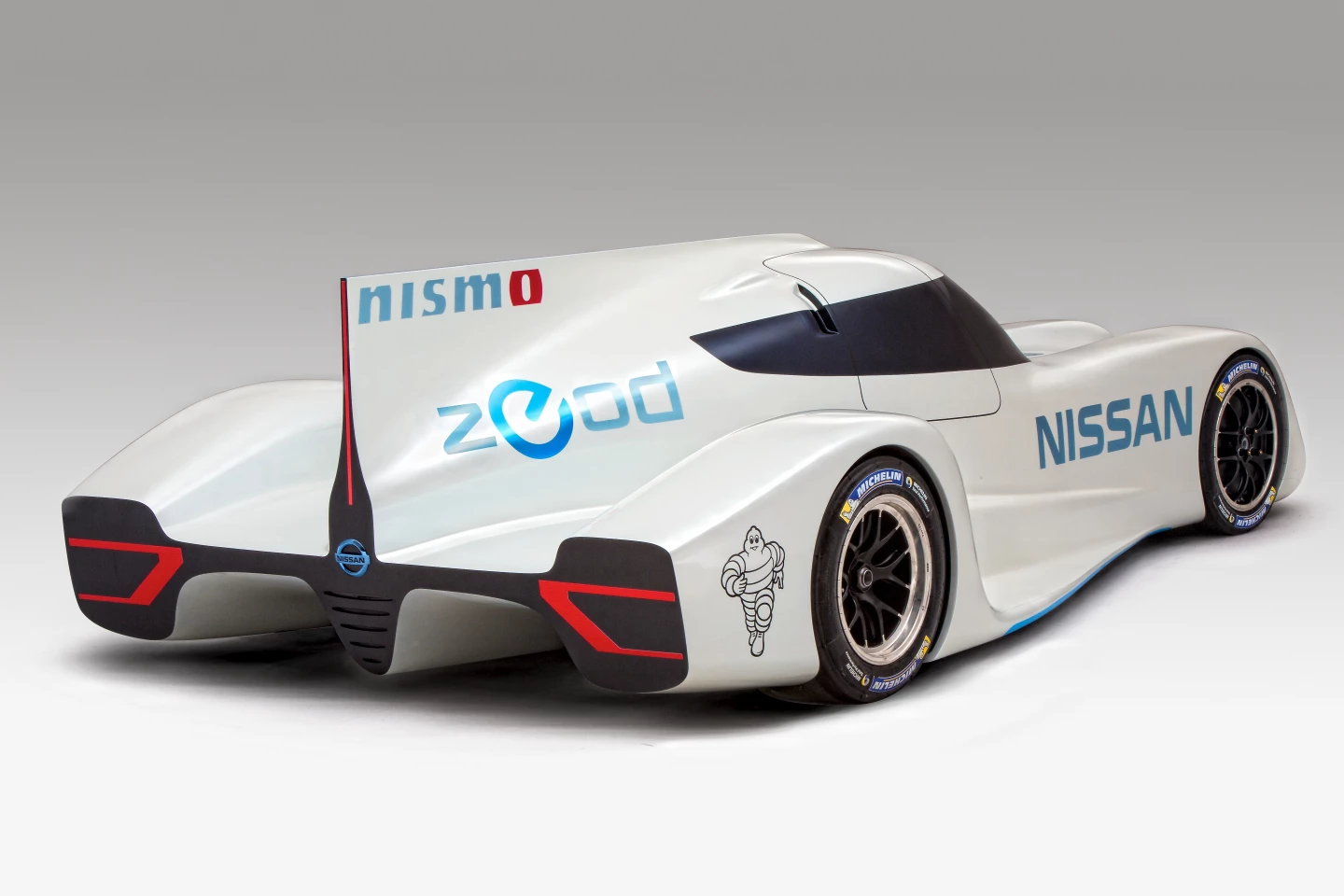
The car on which the name ZEOD first emerged, is the direct forebear of the Bladeglider.
When all else around it is changing rapidly, the fundamental design of the automotive industry’s products has proven to be just as stubbornly unyielding as marine architecture once was. Nissan’s fledgling ZEOD brand might become the catalyst needed to begin freeing up the tight constraints society’s brain has wrapped around the concept of the automobile as personal transport.

The story would not be complete without acknowledgement of Ben Bowlby and Deltawing Racing for their foresight and contribution to our collective understanding of performance automobiles.
This timeline of the remarkably short gestation cycle between concept and what appears to be the beginning of a global roll-out highlights just how fast ideas travel in the current age of global communications.
Many people have understood that light weight and good aerodynamics are the key to performance motoring, but when history judges the achievers, Bowlby and the Deltawing team may yet be elevated to the same rung as Colin Chapman (Lotus), Enzo Ferrari (Ferrari) and Bruce McLaren (McLaren).

A special nod must also go to Dan Gurney who has consistently been one of motorsport’s great innovators, from his motorsport constructors history, where he won a Formula One race driving a car of his own manufacture, through the Gurney Flap, the Alligator motorcycle design and many other innovative executions. His most endearing gift to all for those who truly love the sport, Gurney began the tradition of spraying champagne on the victor’s podium when he won the Le Mans 24 hour race in 1967. Gurney was also the first person to wear a full face helmet in Formula One. Half a century later, he’s not yet finished innovating.
Starting with a clean sheet – NOT!
The Nissan press statement yesterday stated thus: “A clean slate was the starting point for this project, led by Francois Bancon, division general manager of Product Strategy and Product Planning at Nissan. "The goal was to revolutionize the architecture of the vehicle to provoke new emotions, provide new value and make visible for consumers how Zero Emissions can help redefine our conception of vehicle basics," said Bancon.”

Of course it’s not really a clean sheet because the BladeGlider is unmistakably the direct descendant of the ZEOD, Deltawing and came from the same place as the twinkle in Ben Bowlby's eyes.
A simple tape measure will confirm that much of the architecture is a direct lift from Bowlby’s original concept of a narrow front track (in this case 1.0 meter) and a wide stable rear track (1.8 meters) to enable a design which reduces aerodynamic friction and enhances maneuverability. The traditional balanced 50-50 weight distribution of the automotive design is close to 30-70 in this design, but as the stopwatch at Le Mans will attest, it goes around corners just as fast, if not faster, than a conventional layout.

Instead of the convention 1.6 liter internal combustion engine originally envisaged for the Deltawing, the electric drivetrain of the Bladeglider further enhances the strengths of the design as the lithium ion battery packs can be located in the most convenient places to achieve optimal weight distribution, and the Bladeglider’s in-wheel electric motors will further free up the shape of the vehicle to help it leave the air as undisturbed as possible. The wedge-shaped frontal profile of the Bladeglider is only one factor in the total aerodynamic equation – aerodynamic efficiency is all about leaving the air behind a vehicle undisturbed, and hence it’s the back half of the Bladeglider that plays the most significant role in its streamlining.
Composite construction too is vitally important. The square shape of the automobile was dictated by the limited construction materials and techniques of 150 years ago. Now we have the benefits of carbon fiber and carbon fiber-reinforced plastic to apply to chassis and body design, the trapezoid shape can be implemented far more effectively without the performance-restricting weight that metallic construction would have mandated.

Indeed, the Deltawing which ran at Le Mans achieved similar downforce as cars with massive rear wings, without the aerodynamic drag which the appropriately named spoilers induce.
All said, the Bladeglider might well be the start of an automotive design revolution, and I’m feeling very privileged that I’ll be in Tokyo to see it happen.
Nissan's promo video released ahead of the Tokyo debut is below.
